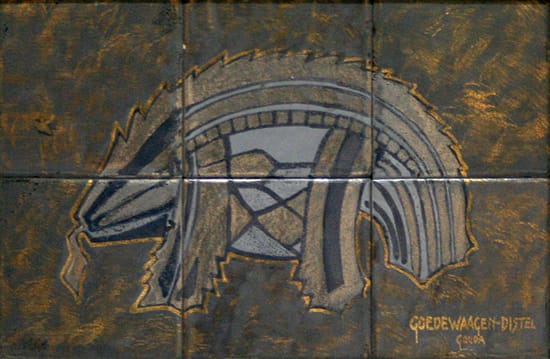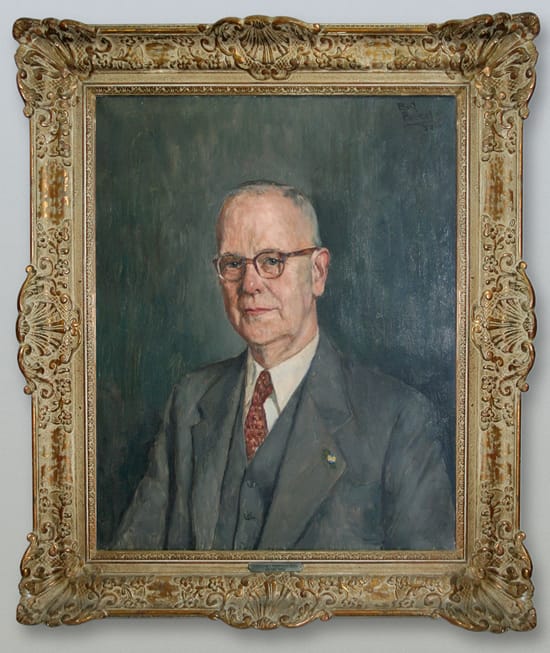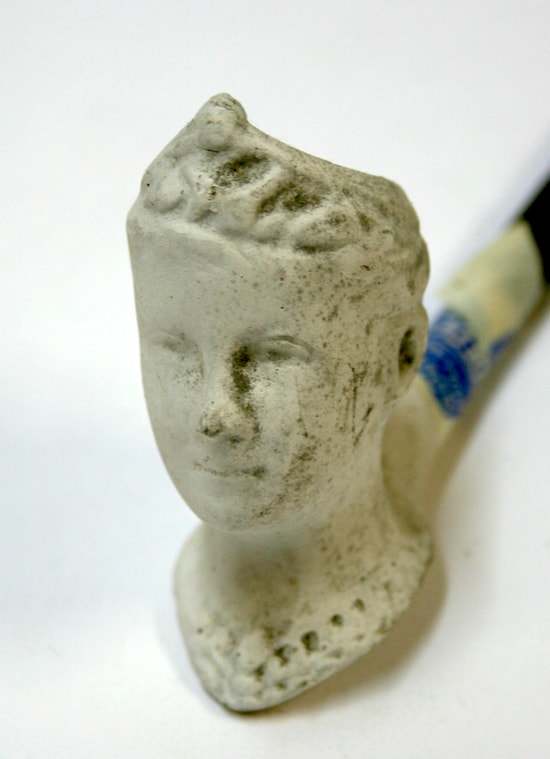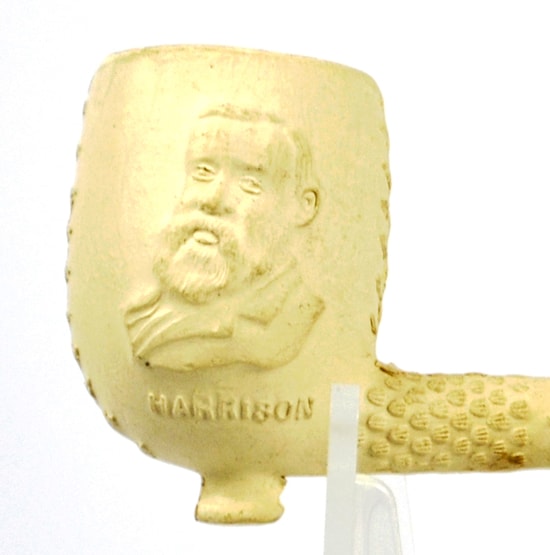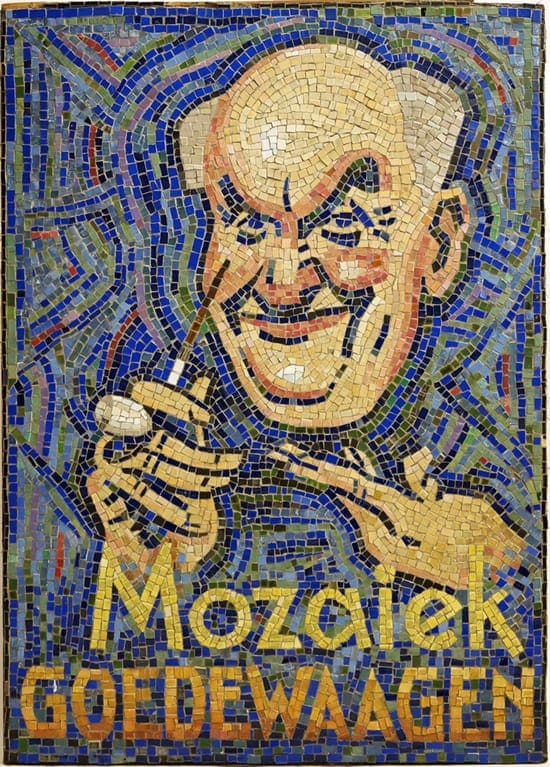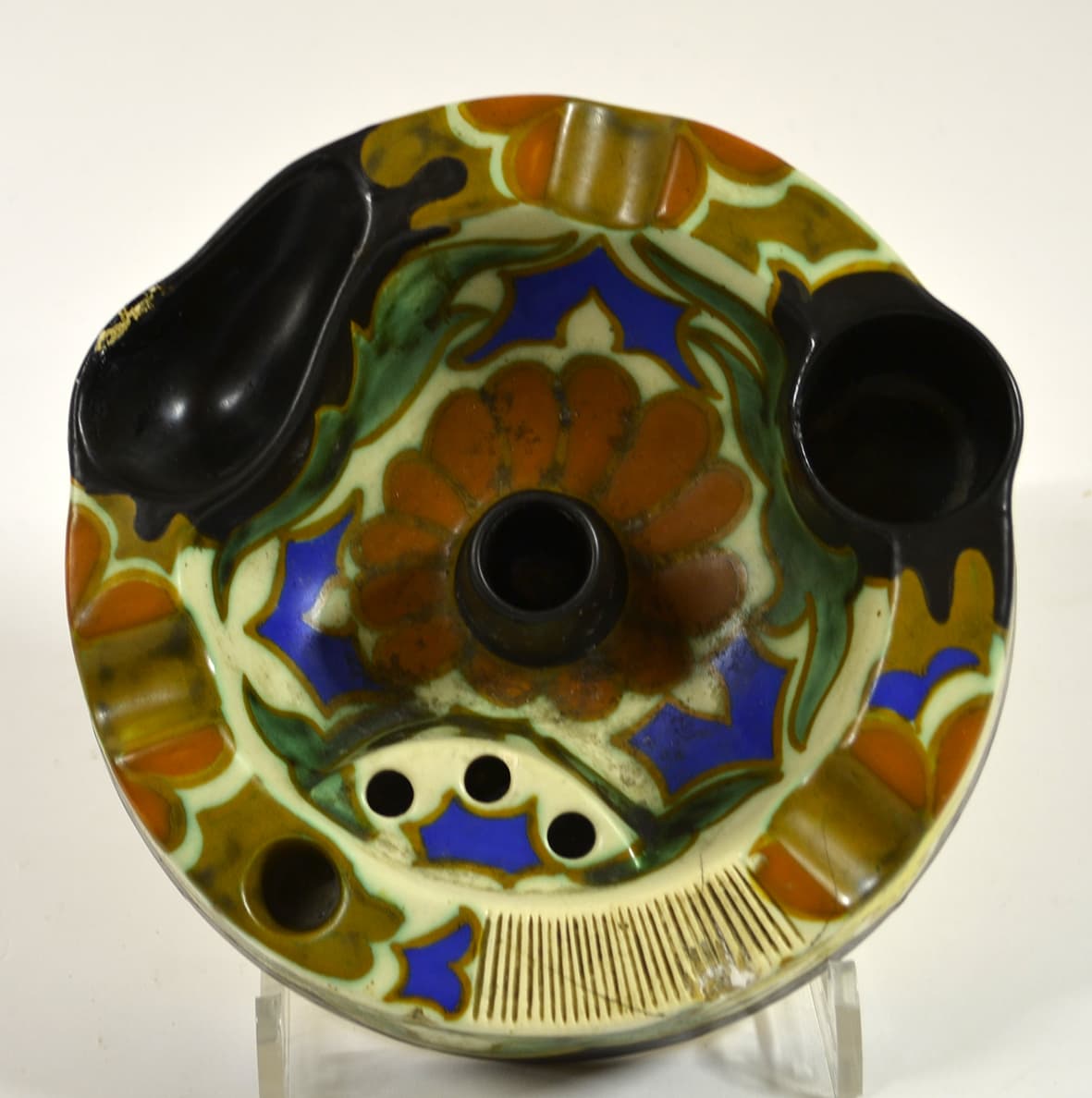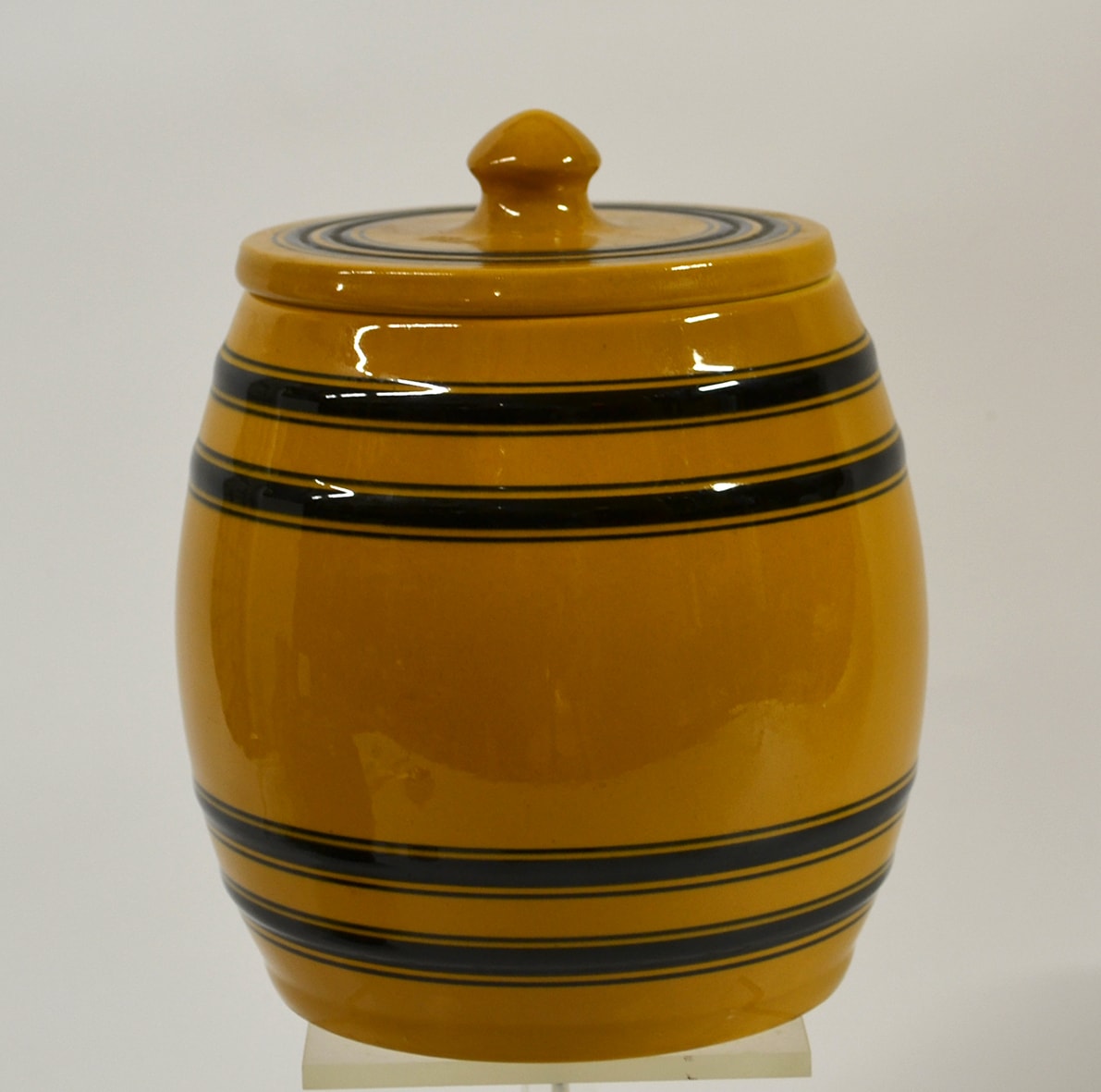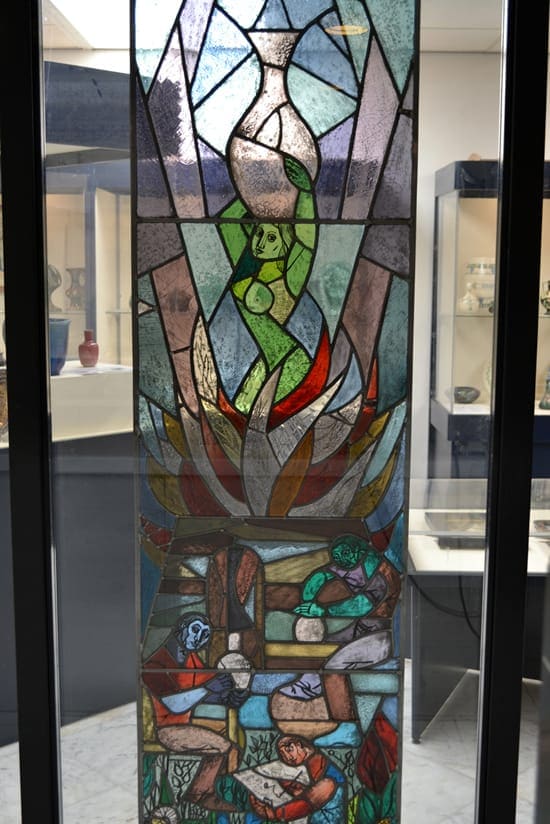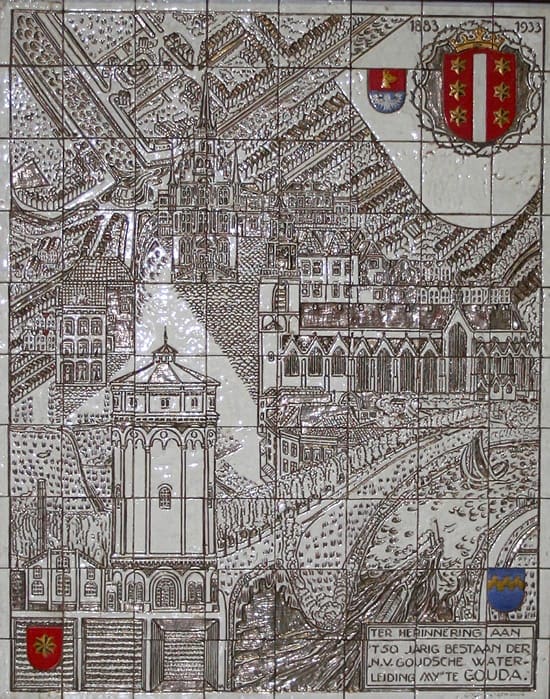After three years of negotiations, Goedewaagen's Koninklijke Hollandse Pijpen- en Aardewerkfabrieken bought the Amsterdam Plateel- en Tegelbakkerij De Distel in 1923. As far as we know, the artist, ceramist and designer Willem Hendrik van Norden (Amsterdam 1883 - Laren 1978) was the only employee of De Distel, who moved to Gouda.
Collection
Around 1900, Goedewaagen's pipe factory experienced an enormous growth, resulting in 1907 in the construction of a for that time very modern factory complex right outside the former city walls at the Jaagpad. In the Ceramic Museum Goedewaagen an educational presentation of a unique chapter in Gouda's history can be found.
From 1953 to 2006 Jan Alblas worked as a plate painter at the Royal Goedewaagen ceramics factory. As a young employee he also painted Goedewaagen's pipes. The fascination for the pipes never left him. He started collecting them, also after his retirement. In 2014 the Dutch Federation of Pipe Smokers bought the almost 300 pieces in his collection. The NFP donated these pipes to the Ceramic Museum Goedewaagen.
In the last quarter of the 19th century, they became a rage: figural pipes of heads of state, statesmen. Handsome portraits, but sometimes also executed as pure caricature. The Goedewaagen's bought many designs, especially in France and exported them worldwide. Recently, the museum received an interesting new loan from Geert Ramaker.
Piet van der Hem, a native of Friesland, was well known as a cartoonist and portrait painter trained at the Rijksacademie. He was also the one who, for the pipe smoking campaigns of Royal Goedewaagen, provided a number of very successful designs of a very satisfied pipe smoker. One of these designs was immortalized by Willem van Norden in a tile tableau and later also in a high quality mosaic.
Piet van der Hem, a native of Friesland, was well known as a cartoonist and portrait painter trained at the Rijksacademie. He was also the one who, for the pipe smoking campaigns of Royal Goedewaagen, provided a number of very successful designs of a very satisfied pipe smoker. One of these designs was immortalized by Willem van Norden in a tile tableau and later also in a high quality mosaic.
Piet van der Hem, a native of Friesland, was well known as a cartoonist and portrait painter trained at the Rijksacademie. He was also the one who, for the pipe smoking campaigns of Royal Goedewaagen, provided a number of very successful designs of a very satisfied pipe smoker. One of these designs was immortalized by Willem van Norden in a tile tableau and later also in a high quality mosaic.
The new building of Goedewaagen of 1909 at the Jaagpad was subsequently expanded several times. In 1923, the pipe and pottery factory of De Star was expanded with the production line of the Amsterdam Plateel- en Tegelbakkerij De Distel. With this purchase also came the all-rounder Willem Hendrik van Norden to Gouda to lead the art studio. Van Norden is also credited with the production of a 205 cm high stained-glass window with an allegorical representation of the potter. That window was restored by Henry Duijvestijn in April 2016.
Carel Adolph Lion Cachet experienced his most important creative period as a ceramic designer between 1927 and 1931. Working closely with Willem Hendrik van Norden and glaze specialist Dirk Abraham Goedewaagen, Lion Cachet developed surprisingly monumental designs for the first-class accommodation on the large passenger ships of the Amsterdam shipping companies Maatschappij 'Nederland', KPM and the Java-China-Japan Line. Test tableaus in the new gold-decor technique Akanthus were preserved at Goedewaagen.
C.D. (Dick) Kikkert was a classmate of Dirk Abraham Goe-dewaagen, the youngest son of pipe and pottery manufacturer Aart Goedewaagen, at the HBS in Rotterdam. Dick Kikkert went to study at the Amsterdam Quellinus-school, later renamed the Instituut voor Kunst- en Nijverheids Onderwijs. Like many other pupils of ceramics teacher Bert Nienhuis, he did his apprenticeship at Goedewaagen.

